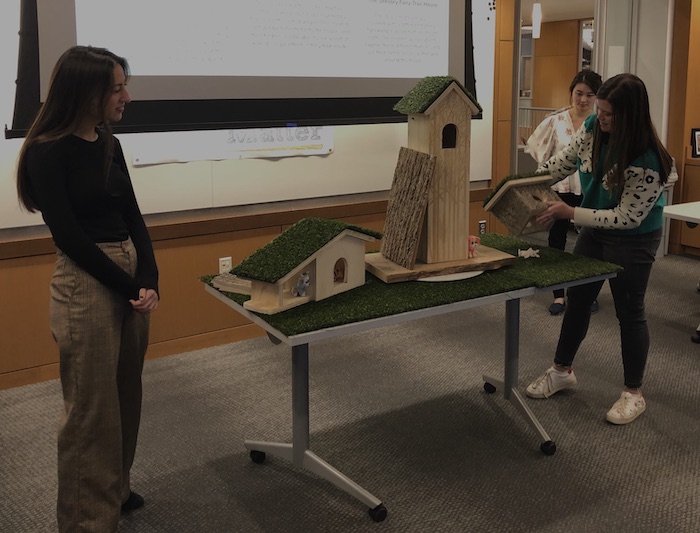
Making things is cool. Making things that solve a problem, improve a life and make a difference is even better.
Students in “How to Make (Almost) Anything” recently presented their final projects for clients with wildly diverse needs. Among them:
- A young boy with one leg eight inches shorter than the other needed a way to raise one shoe that wasn’t ugly and could be easily changed as he continues to grow.
- Hassan Sharaff, a School of Engineering alumnus, wanted a way to more rapidly seed trays for growing lettuce and other crops at his local hydroponic farm. Sharaff, who majored in mechanical engineering, also needed a lighted cart to wheel at night as he harvested lettuce when it is at its best.
- Cheekwood Gardens asked for new eyes to rethink how to design small, interactive fairy houses for children younger than four along a new discovery trail scheduled to open in March 2020.
Early in the process the students interviewed their client sponsors to better understand their needs, goals and preferences, as well as any design constraints.
In designing a harvest cart, for example, sophomore Jonathan Stroud and junior James Valencia shifted away from metal and used both white and clear PVC tubing and connectors, which have rounded edges.
“We didn’t want the cart to snag on existing materials in the greenhouse,” Stroud said.
And, they outfitted the clear PVC parts with remote-controlled LED lights.

The young boy is still growing and will have additional surgical procedures to address the difference in the length of his legs, which is now about eight inches. The team created a prosthesis out of molded foam that can be covered in different fabric and adjusted or easily remade.
“The functional requirements had to address that he has a rod in leg and has to swing his leg around, which creates a pressure point,” said junior Jolie Lerner. “It had to be easily replicable, have structural integrity and be aesthetically pleasing and adjustable.”
The seeder for HydroHouse Farms in Hermitage, a prototype app to help students find parking and fairy houses that invite “the whole family to get their hands dirty” rounded out the projects.

It was the fifth time Kevin Galloway, Design as an Immersive Vanderbilt Experience (DIVE) director, taught the class, which is open to sophomores and juniors of any discipline.
Students assess needs, come up with three potential solutions, evaluate the options, then design, prototype, and test the top contender.
The class builds rapid prototyping skills students can apply to future classes and personal projects, said Galloway, who is also a research assistant professor of mechanical engineering and Vanderbilt’s director of making. They learn about two-dimension models, gear systems, material strength 3D design tools and 3D models and assemblies.
“I had to learn everything in grad school on my own,” Galloway told class members and visitors.
Sponsor feedback is key, he said.
“The idea is to learn from failure and take those insights and make your designs better. Look for things that others are not seeing,” Galloway said. “It is hard to design in a vacuum.”